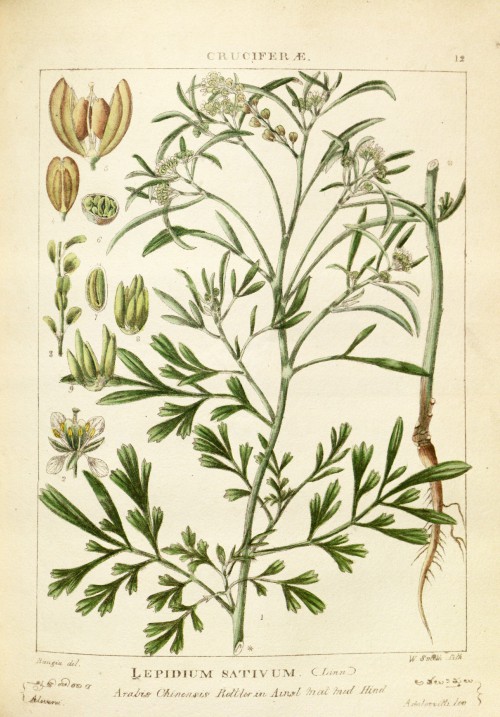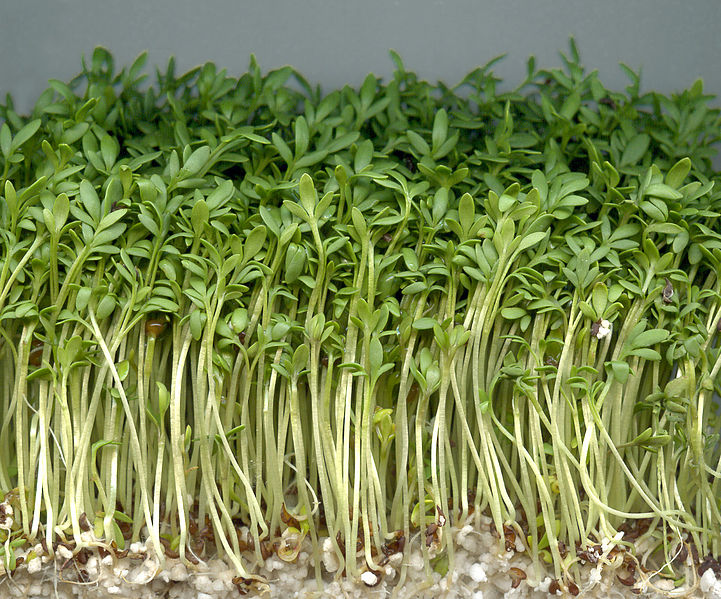Dies ist eine alte Version des Dokuments!
Lepidium sativum L. - syn. Nasturtium sativum Medik., Thlaspi sativum Crantz. - Brassicaceae - garden cress, pepperwort, pepper grass, Gartenkresse
Annual herb, up to 60cm tall, native to western Asia and Northeast Africa, naturalized elsewhere, widely cultivated for sprouts; lower leaves pinnatisect or lyrate-pinnate, upper leaves linear, sessile; flowers small, 2-3mm, white to pinkish; seeds 3mm long, 1mm broad, brown.
„Garden cress is added to soups, sandwiches and salads for its tangy flavor. It is also eaten as sprouts, and the fresh or dried seed pods can be used as a peppery seasoning (haloon). In England, cut cress shoots are commonly used in sandwiches with boiled eggs, mayonnaise and salt.“ https://en.wikipedia.org/wiki/Garden_cress
Cress seedlings contain high levels (1.2mg/g fresh weight) of benzylglucosinolate (glucotropaeolin) and trace amounts of 2-phenethylglucosinolate in the first week following germination.
[Benzylglucosinolate degradation in Lepidium sativum: effects of plant age and time of autolysis., Gil, V., MacLeod, A.J., Phytochemistry, 19(7), 1980, 1365-1368]

Wight,R., Illustrations of Indian botany, or figures illustrative of each of the natural orders of Indian plants, vol.1 t.12 (1840)
http://plantgenera.org/species.php?id_species=595366

garden cress
CC BY-SA 3.0, Author: Rainer Zenz Wikimedia Commons
